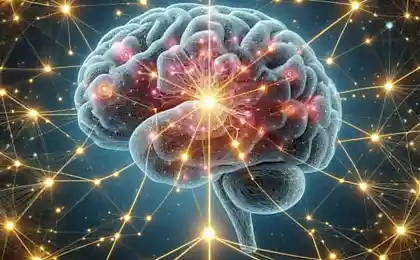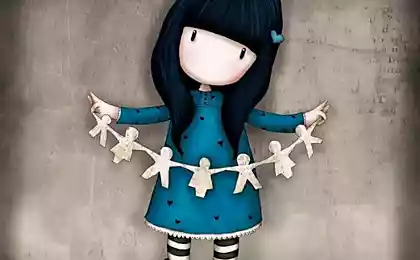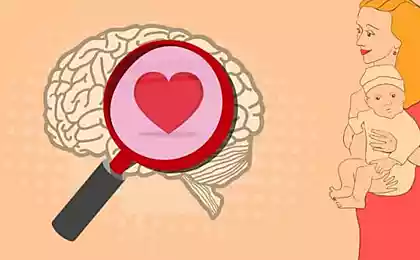157
6 signs that you are not an introvert, but an emotionally restrained person
Emotional restraint is similar to introversion, but it is still important to recognize it, because it greatly complicates your life.

Mary always considered herself an introvert. She preferred quiet evenings at home to noisy companies, rarely shared personal experiences and felt comfortable alone. But when her close friend noticed that Maria seemed “frozen” even in moments of joy, the girl wondered: what if it’s not about introversion?
The difference between introversion and emotional restraint seems small, but understanding this difference can dramatically change the quality of life. Introversion is the preference of the inner world over the outer, the natural need for solitude to restore energy. Emotional restraint is an acquired defensive response that can severely limit a person’s emotional life.
Understanding emotional restraint
Emotional restraint is formed as a defense mechanism in response to traumatic experiences or adverse emotional environments in childhood. According to research by psychologist John Bowlby, the author of the attachment theory, children who have not received proper emotional support often develop an avoidant attachment style characterized by emotional detachment.
It is important to understand that emotional restraint is not an innate trait, but an acquired survival strategy that once helped to cope with painful situations.
Six key signs of emotional restraint
1. Physical tension in emotional conversations
When it comes to your feelings or someone else’s, you feel physical discomfort. The muscles of the neck are compressed, breathing increases, there is a desire to change the topic. Introverts may experience fatigue from emotionally intense communication, but not physical rejection.
2. Difficulty recognizing your own emotions
You often can’t tell what you’re feeling. To the question “How are you?” answer “Normal”, even when the storm is raging inside. This phenomenon is called alexithymia, the inability to recognize and describe emotions.
3. Avoiding conflict at all costs
You are willing to sacrifice your interests to avoid confrontation. Even just anger seems dangerous to you. Introverts may not like conflict, but are able to defend their boundaries when necessary.
4. A feeling of "emotional emptiness"
Sometimes you feel like you’re watching life through glass. Happy events do not bring the expected satisfaction, and sad ones do not cause tears. This is not depression, but the result of suppression of the emotional spectrum.
5. Overcontrol in relationships
You prefer to control the depth of intimacy and rarely let your partner see you as vulnerable. Intimacy is scary not because you are an introvert, but because emotional openness is associated with danger.
6. Somatic manifestations of repressed emotions
Headaches for no apparent reason, digestive problems, muscle clamps - the body "talks" for emotions that do not get an outlet. Psychosomatic studies show a direct link between emotional suppression and physical symptoms.

Practical strategies for overcoming emotional restraint
The "Emotional Diary" technique
Write down three emotions you experienced daily, even if they seem insignificant. Describe the physical sensations that accompanied them. This will help to reconnect with the emotional world.
Method of progressive disclosure
Start small – share one personal experience with a trusted person. Take your time, emotional barriers have been forming for years and take time to overcome.
Mindfulness practice
Mindfulness meditation helps to develop the ability to observe emotions without immediately suppressing them. Studies show that regular meditation increases emotional flexibility.
Emotions are not enemies, but valuable sources of information about your needs and boundaries.
Bodywork.
Because emotional restraint often manifests itself through physical exertion, body practices can be particularly effective. Yoga, dance therapy, massage help to “freeze” blocked emotions.

When it is necessary to consult a specialist
If emotional restraint seriously affects the quality of life – it interferes with building close relationships, leads to a constant feeling of loneliness or causes physical symptoms – you should consult a psychologist. Methods of emotional therapy and schema therapy have proved especially effective.
Studies show that people who work on emotional restraint notice a significant improvement in quality of life after 3-6 months of regular work.
Differences in everyday life
An introvert after a busy day feels the need for solitude to restore energy, but is able to deeply experience emotions. An emotionally restrained person may avoid even pleasant emotional situations for fear of losing control.
An introvert chooses a narrow circle of close friends and builds deep relationships with them. An emotionally restrained person may have many acquaintances, but keep everyone at an emotional distance.
The Path to Emotional Freedom
Overcoming emotional restraint is not about giving up self-control, but about learning to choose when and how to express your feelings. It is a path to a more authentic, fulfilling life, where emotions become allies rather than a source of fear.
Maria, whom we talked about at the beginning, after two years of working on herself, learned to distinguish between introvert fatigue and emotional stupor. She still prefers quiet evenings to noisy parties, but now she can fully rejoice, sad and angry. Her relationship became deeper and sincere, and life became brighter and richer.
Glossary
Introversion
The psychological characteristic of the personality, in which a person prefers the inner world to the outer, needs solitude to restore energy.
Emotional restraint
Acquired defensive response characterized by suppression or avoidance of emotional experiences.
Alexithymia
Inability to recognize, distinguish and describe one’s own emotions.
Attachment theory
A psychological theory that explains the formation of emotional connections between people based on early childhood experiences.
Psychosomatics
Direction in medicine and psychology, studying the influence of psychological factors on physical health.
Scheme therapy
Integrative approach in psychotherapy aimed at working with deep emotional patterns and behavior patterns.
Why a BONRO swing is a smart choice for caring parents
Why Fear Can Become Chronic and How It Harms Your Health























